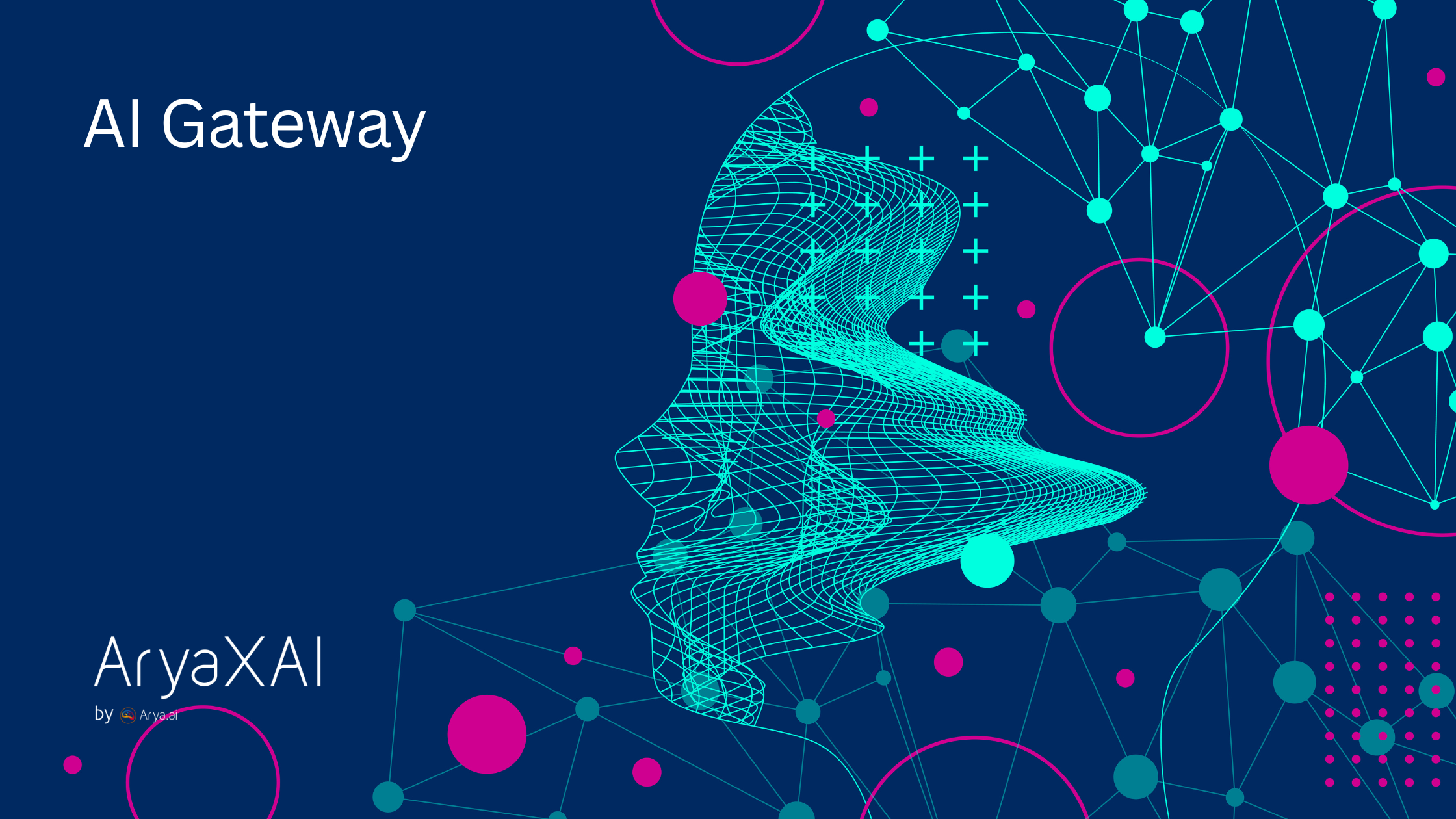Breaking AI Out of the Box: How Anthropic’s MCP Could Reshape the Future of AI Development
8 minutes
May 15, 2025
%20%20-%20AryaXAI%20blog.png)
Artificial Intelligence has advanced with breathtaking leaps in the past few years. The models of today can summarize text, create images, code, write business plans, and even converse in a humanly convincing manner. But here's the twist: all this intellectual heft, and most AI systems remain isolated.
Imagine giving a super-intelligent assistant a desk in your office, but never allowing it access to your filing cabinet, calendar, CRM, or internet browser. That's basically how most AI tools work today. Smart — but not networked. They lack real-time context, can't draw dynamically from your company's information, and frequently take enormous amounts of manual labor to interface with even simple external systems.
Let’s take a few examples to highlight this:
- Customer Support Chatbots: You may have a highly advanced AI-driven support bot on your site. But if it has no direct access to your actual-time inventory system or your CRM database, it will be short on answering even the simple questions like "Is this product in stock?" or "What's the status of my previous order?"
- Legal or Compliance AI Assistants: These can read text phenomenally well, but if they cannot access your firm's current internal policies or jurisdiction-specific databases, then they are basically reading in a vacuum — and possibly giving out-of-date or non-compliant advice.
- Financial Forecasting Tools: You might have an AI that can forecast cash flows, but without real-time access to your accounting program, bank feeds, or ERP system, it's forecasting with out-of-date or partial data.
- In all these situations, the missing ingredient is connectivity. The AI's potential is locked up due to a lack of live, uninterrupted access to the tools and data it needs to work efficiently.
In all these cases, the missing piece is connectivity of the AI model with the real-time data. The AI’s potential is boxed in by a lack of live, seamless access to the tools and data it needs to operate effectively.
That’s where Anthropic’s Model Context Protocol (MCP) comes in — a universal framework introduced in late 2024 to finally unlock AI’s ability to operate across systems, in real time, without the pain of custom integrations. Described by some as a "USB for AI," MCP could reshape how developers build intelligent, connected experiences at scale.
In this blog, we'll explore what MCP is, how it operates, what issues it addresses, and why it may be a foundation for next-generation AI systems. Whether you're an AI architect or a probing builder, it's a trend you should be watching.
What is MCP?
Model Context Protocol or MCP is an open interoperability standard developed by Anthropic, the company behind developing Claude, designed to streamline how AI agents interact with external tools, data sources, and services. Rather than relying on custom APIs and hard-coded integrations, MCP gives AI systems a universal, structured way to connect and collaborate with third-party tools, in real time.
Why MCP Matters in AI Agent Architecture?
Traditionally, every new AI function, like retrieving a file, summarizing a document, or querying a database required custom logic, individual APIs, and manual integration work. MCP removes that friction. It enables AI agents to:
- Access and invoke tools dynamically, without prior knowledge of their internal design
- Perform multi-step, autonomous tasks, such as executing a workflow or chaining together tools
- Accelerate development by eliminating the need for custom pipelines or “glue code”
MCP introduces a plug-and-play approach to building autonomous AI agents, allowing them to communicate in a unified protocol across services, regardless of programming language, hosting environment, or domain.
As outlined in Forbes and technical previews from Anthropic, MCP enables AI to move beyond Q&A chatbots toward fully functional AI co-pilots and workflow automation agents. With real-time compatibility and toolchain chaining, MCP is poised to become a key building block for next-gen AI platforms.
MCP eliminates ad-hoc integrations by introducing a unified, real-time protocol optimized for autonomous AI agents.
Why Today’s AI Is Smart, But Still Disconnected?
Artificial Intelligence is transforming industries, from content generation to legal automation to software debugging. Yet even the most advanced AI models remain disconnected from real-time data, unable to interact with live systems or adapt to dynamic environments.
While AI can generate essays, contracts, code, and images, it struggles with questions like:
- “What’s in our latest sales report?”
- “When was the last update to our inventory?”
- “What’s a user’s current subscription status?”
That’s because AI systems lack native integration with enterprise tools, APIs, and databases. They aren’t wired into your internal infrastructure, leaving them blind to live data streams, product changes, and operational context.
Let’s paint the picture with a few scenarios:
- Enterprise AI Assistants: Imagine building an AI assistant for your HR team. It can answer questions about employment laws and benefits policies, but if it can’t tap into your internal payroll software or employee portal, it can't answer personalized queries like, “When will my next paycheck arrive?” or “How many vacation days do I have left?”
- AI in Healthcare: A medical diagnostic AI may have been trained on millions of patient records and academic papers. But without access to a hospital’s EHR (Electronic Health Record) systems or recent lab reports, it’s making decisions based on stale or generalized data — not patient-specific insight.
- Retail and E-commerce: Picture an AI that generates sales strategies or product recommendations. If it can't access real-time sales dashboards, customer feedback, or inventory levels, it’s essentially offering guesswork — not intelligence.
This "from-scratch-for-every-connection" approach is not just ineffective — it's inherently not scalable to apply AI across real-world domains. It can delay product cycles, overwhelm engineering backlogs, and greatly constrain the flexibility of AI-based features.
What the ecosystem has been waiting for is a standardized, secure, and scalable means of integrating AI into the digital world — a means of bridging the gap between intelligence and environment without having to reinvent the wheel each time.
That's exactly where Anthropic's Model Context Protocol (MCP) comes in.
Model Context Protocol (MCP): The Future of Plug-and-Play AI Connectivity
Model Context Protocol (MCP) is an open standard that bridges the gap between AI intelligence and enterprise context. Anthropic’s Model Context Protocol (MCP) is their answer to one of AI’s most stubborn challenges: seamless integration. In today’s ecosystem, every time an AI needs to connect with a new tool — say, a CRM, cloud storage, financial database, or third-party API — developers have to build a custom bridge. These one-off integrations are time-consuming, error-prone, and hard to scale. MCP flips that paradigm by introducing a unified, open standard that enables AI systems to connect with external resources in a consistent, reusable way.
MCP acts like a universal translator between AI models and the digital world. Whether it’s pulling files from a shared drive, executing a query on a database, or interacting with business tools, the AI doesn’t need bespoke code to understand what to do. Instead, MCP defines a clear client-server architecture: the host (the AI system), the client (a communication layer), and the server (any external tool or data source). These components interact in a modular, declarative way — allowing developers to plug in new capabilities without breaking the entire system.
With MCP, AI agents can:
- Fetch real-time data from enterprise systems
- Perform multi-step tasks across multiple tools
- Chain tool interactions together dynamically
- Respond to queries with full context of the digital environment
Think of MCP as the "USB port" for AI — a standardized connector that replaces the messy tangle of hard-coded, duct-taped integrations with something elegant and scalable. It’s not about giving AI more raw power — it’s about letting that power reach the tools, data, and actions needed to solve real-world problems. With MCP, AI systems become more than just smart — they become connected, adaptive, and ready to operate in the real-time, multi-tool world we live in.
The Architecture of MCP: Simple, Yet Powerful
At the heart of MCP lies a clean, modular three-part architecture that’s designed to make AI systems interoperable with the broader digital ecosystem. Each component plays a distinct role in enabling secure, real-time, and standardized communication between AI and external tools or data sources.
- Host – The AI System
The host is the AI application or system itself — typically a large language model (LLM), agent framework, or other AI-powered interface. It’s responsible for initiating tasks, interpreting responses, and driving decisions. However, it doesn’t directly interface with the outside world. That’s where the other components come in. - Client – The Communication Bridge
Acting as the intermediary, the client handles all the communication between the host and the external environment. It takes structured requests from the host, forwards them to the appropriate server, and then delivers the server’s response back to the host in a usable format. This layer abstracts away the complexity of individual integrations, making the architecture flexible and reusable across different use cases. - Server – The External Capability Layer
Servers represent any external system or service that the AI needs to interact with — such as APIs, databases, file systems, software tools, or even physical devices. These servers expose their functionality in a standardized way, effectively becoming "windows" through which the AI can see and act upon the world outside. They provide real-time access to data, enable task execution, and allow the AI to stay current without manual updates.
This architecture makes MCP both scalable and adaptable. New tools and data sources can be added without reengineering the AI system. Instead of hardcoding new integrations for every use case, developers simply configure the server endpoint and allow the client to handle the interaction — saving time, reducing bugs, and laying the groundwork for future expansion.
By simplifying how AI systems connect with their environment, MCP enables a new level of responsiveness, context-awareness, and functionality — without the mess of custom, point-to-point integrations.
Why MCP Matters: More Than Just Streamlined Access
At first glance, MCP might sound like a backend convenience — just a cleaner way to connect AI with data. But in reality, it goes much deeper. MCP unlocks meaningful capabilities that directly improve how AI performs in real-world applications:
- Unified Function Calling
Traditionally, developers have had to write new code every time an AI needed to trigger an external action — whether it was sending an email, updating a record, or querying a database. MCP replaces this fragmented process with a standardized, reusable framework for function calling. That means fewer bugs, greater consistency, and more secure execution pipelines across different tools and systems. - Smarter RAG Pipelines
Retrieval-Augmented Generation (RAG) allows AI models to pull in external knowledge at runtime — but building and maintaining these pipelines is complex. MCP makes RAG systems cleaner and more declarative. Developers can easily connect the AI to diverse, real-time data sources without the hassle of manual wiring, leading to more accurate, context-aware outputs and fewer hallucinations. - Real-Time Responsiveness
One of the biggest limitations of current AI systems is their lack of live awareness. With MCP, AI can access up-to-date information — like live financial feeds, inventory levels, or patient records — without waiting on new integrations. This enables AI systems to make smarter, more timely decisions and truly respond to a changing environment.
Why Developers Should Pay Attention
The Modular Connectivity Protocol (MCP) isn’t just a backend infrastructure update — it’s a powerful enabler for building smarter, faster, and more sustainable AI-driven systems. Whether you're building internal tools or customer-facing AI products, MCP offers concrete advantages that can significantly improve developer experience and team velocity.
The Modular Connectivity Protocol (MCP) is not merely an update to backend infrastructure — it's a force multiplier for creating more intelligent, quicker, and more sustainable AI-powered systems. Whether you're creating internal tools or consumer-facing AI products, MCP provides tangible benefits that can substantially enhance developer experience and team velocity.
1. Remove Duplicate Code
Forget re-implementing the same logic for each new model or service. MCP provides a unified abstraction layer, meaning developers can integrate once and scale across platforms without redundant work. The result is less boilerplate, simpler codebases, and fewer bugs created by repetitive integration logic. It's about building once and scaling everywhere.
2. Speed up Speed to Market
Development cycles are frequently slowed down by integration overhead — disparate APIs, bespoke connectors, and divergent model behaviors. MCP eliminates these friction points. By offering plug-and-play components and consistent data flows, dev teams are able to concentrate on iterating on core features, trying lots of things, and shipping value to customers faster than ever before.
3. Increase Reliability at Scale
As applications grow, so do their failure points — particularly in multi-dependent AI systems. MCP normalizes communications and connection patterns, minimizing ad-hoc patchwork and the resultant risk of runtime errors. The end result: more predictable behavior across environments, simpler debugging, and more reliable uptime as the stack increases.
4. Facilitate Sustainable Development
Technical debt is innovation's silent killer — particularly in rapidly changing AI environments. MCP delivers a future-proof building block by promoting modular, compatible architecture. As new frameworks, tools, and models emerge, your infrastructure remains supple and malleable. It's a long-term investment in uncluttered, easy-to-maintain code that won't collapse under the pressures of tomorrow's complexity.
The Road Ahead: AI That Doesn’t Just Think — It Connects
The Model Context Protocol (MCP) is more than just an engineering fix — it represents a fundamental shift in how we design and think about AI. Traditionally, connectivity has been treated as an afterthought, tacked on after the main system is built. MCP changes this by making connectivity an integral part of AI architecture, enabling systems that are not only intelligent but also deeply interconnected.
This paradigm shift lays the foundation for more innovative, more adaptable AI applications. Instead of siloed, isolated functions, MCP facilitates a more unified, context-aware ecosystem where systems communicate seamlessly, share insights, and evolve together. We're on the brink of a new era in AI, where applications are not just reactive but actively aware of their surroundings and capable of learning from real-time interactions.
If MCP fulfills its potential, we could be closer than we think to unlocking the full power of AI systems that don’t just think, but connect, collaborate, and adapt in ways we’ve only dreamed of.
SHARE THIS
Discover More Articles
Explore a curated collection of in-depth articles covering the latest advancements, insights, and trends in AI, MLOps, governance, and more. Stay informed with expert analyses, thought leadership, and actionable knowledge to drive innovation in your field.

Is Explainability critical for your AI solutions?
Schedule a demo with our team to understand how AryaXAI can make your mission-critical 'AI' acceptable and aligned with all your stakeholders.



.png)




















